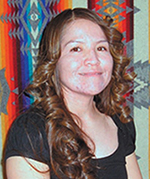 Why did you choose your specific health professional career?
Why did you choose your specific health professional career?
I chose this profession because of the high prevalence of diabetes among Native Americans.
What experiences did you have to make sure this profession was right for you?
One experience was shadowing under a nutritionist in regards to the clinic flow and management of the local WIC clinic. The second experience had to do with teaching nutrition to elementary students while I was a Junior and later a Senior in college.
Describe any obstacles or barriers to success that you encountered along your health professional career path and how did you overcome them?
The chemistry courses were difficult. I found that chemistry courses were intense and required a lot of diligence and focus. To increase my understanding of chemistry concepts and principles, I attended group study sessions with fellow Nutrition Science students and met with the Professor regarding areas for improvement.
What do you do in your current job?
In my current job, I conduct nutrition counseling for high-risk populations among women, infants, and children. These clients are considered high risk if they have one or more of the following conditions: anemia, high blood pressure, obesity, or diabetes among many other nutritional risks. Infants and children who are underweight, premature or low birth weight are also considered high-risk. In addition, I manage two local WIC clinics, one in Tuba City, AZ and one in Kayenta, AZ.
What advice do you have for American Indian/Alaska Native students who are interested in health careers?
Working as a Nutritionist within my native community, I am definitely aware of the shortage of health professionals on the reservation. I feel we need more Native American medical and health professionals because of the intercultural connection. Natives tend to have a greater capability of communicating and understanding Native patients when providing treatment needed for those suffering from preventive diseases such as diabetes. This close connection between the health professional and the patient often inspires the patient to take small steps toward healthy behavioral changes. I have experienced this cultural connection with my own clientele in my area of work.

